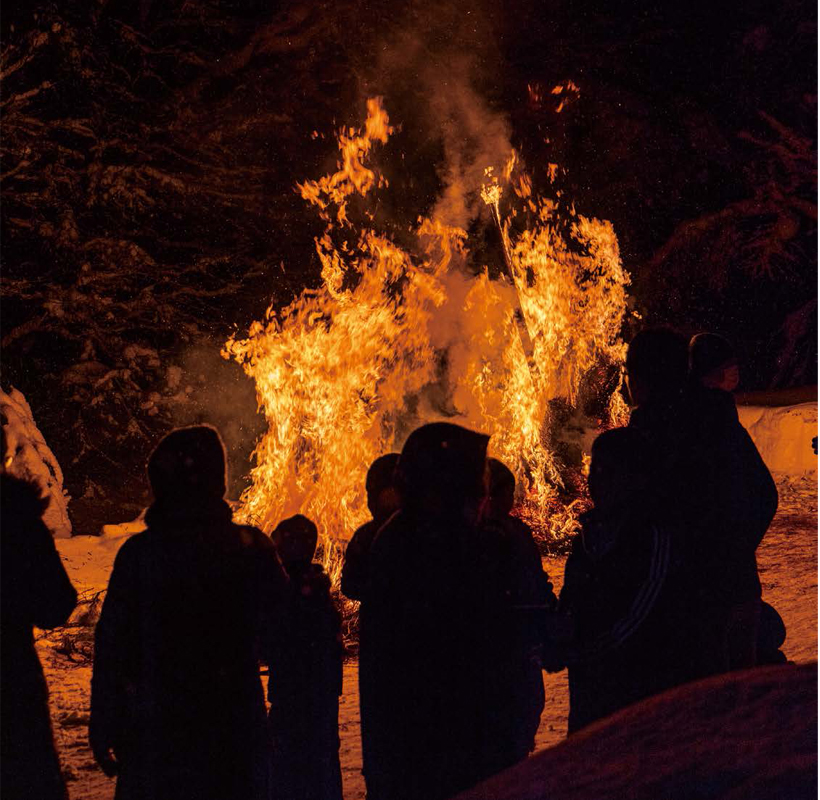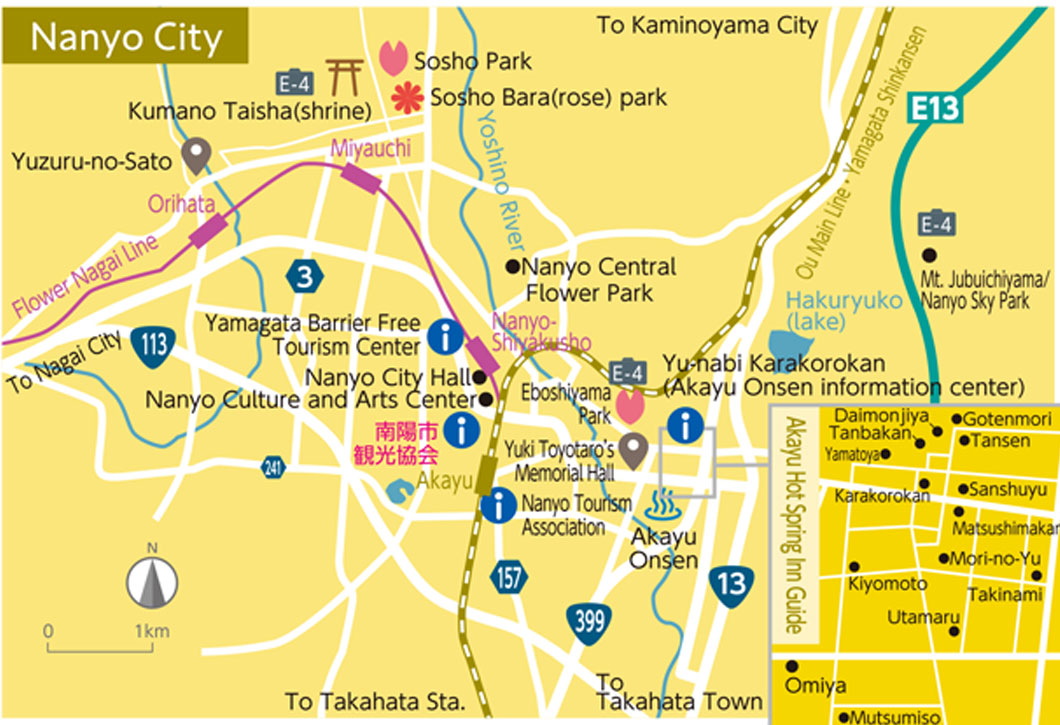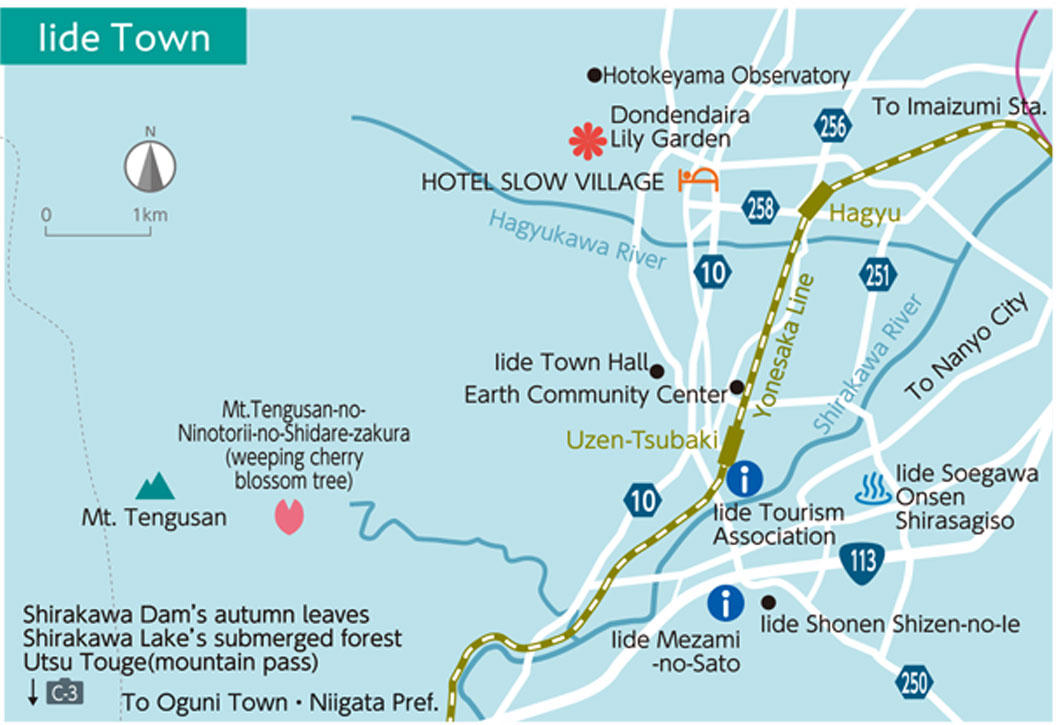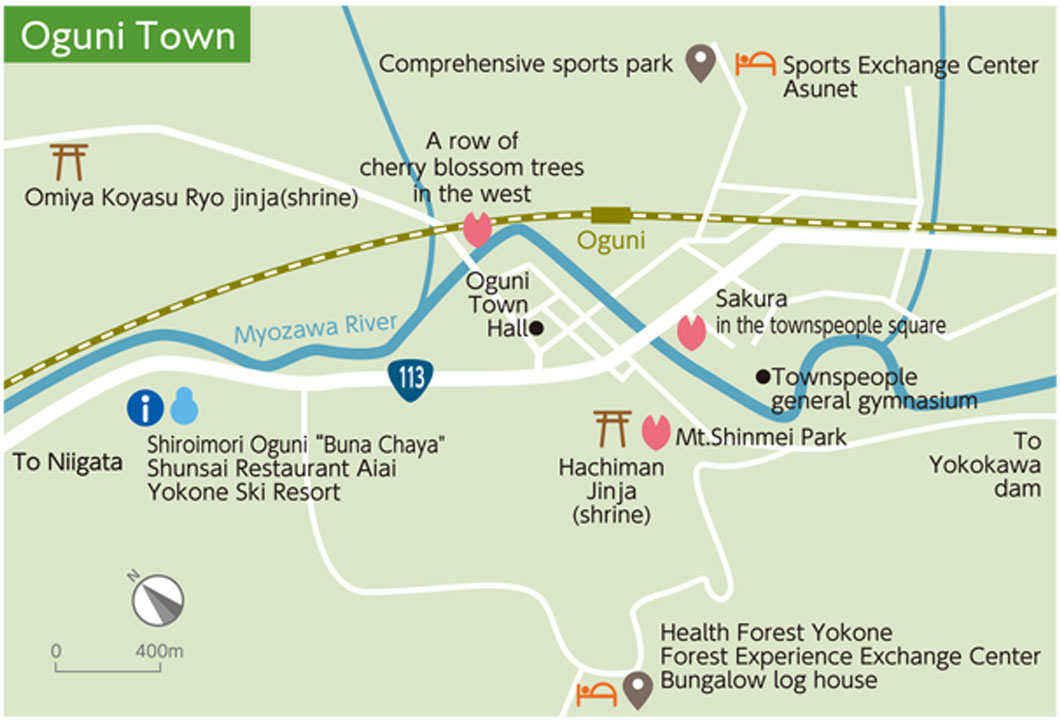
Pray to the Sacred Fires
to Call on Cheers, Laughter,
and the Power to Live On
A Fire Festival of Prayer Passed Down by the Locals
Yahahaero
One of the festivals held in many villages in Japan is the First Full Moon Fire Festival. It is called “Dondoyaki” nationwide, “Dontoyaki” in the Tohoku region, “Sagicho” in Kyoto and Hokuriku, and “Dosojinsai”, “Onibitaki”, among others elsewhere. It is held around January 15th every year. It is also called various names in the Okitama region, but if you hear the shout “Yahahaero” during the festival, you will know you are in the Okitama area.
Although there are diffrences depending on the region, rice straw and kaya are piled up in a conical shape to make a yagura called “saito”. New year’s decorations such as kadomatsu and shimenawa, old yen bills, bean husks, etc. are gathered and burned. There are many rituals done with fire; burning body wipes will bring health is one of them. The festival Yahahaero welcomes Kami and expels bad luck. Festival goers pray for a good harvest, good health, and prosperity of descendants. On the day of the festival adults cut down the tree used for the core of the saito from the mountains, and children collect rice straw and kadomatsu to help make the saito. They wait for nightfall making dangosashi, dango flowers, and dango tree ornaments.
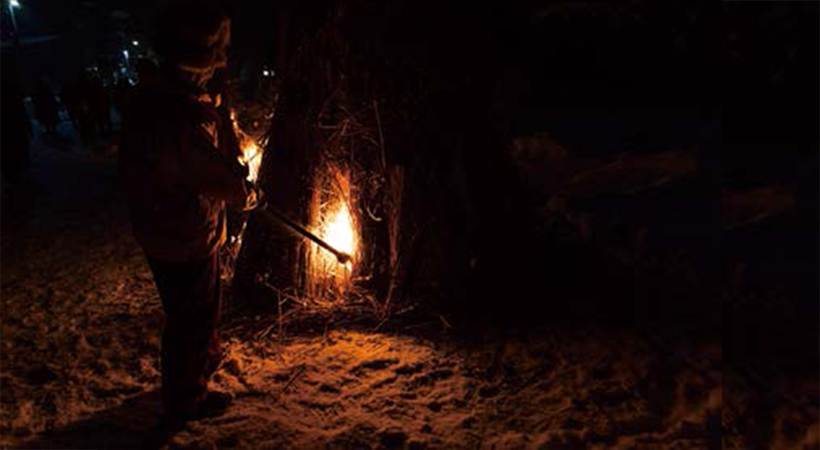
Yahahaero begins sometime after 6 pm. Festival goers walk among the snow lanterns and greet familiar, lit-up faces. The playful voices of children can be heard. There are two saito, one large and one small. The smaller one is called “benjo” or “secchin” and is ignited first. In some areas, large saito are lit only by older men and women, and 15-year-old children. When the fire crackles and pops, and the people’s faces are lit up, the people start chanting “Yahahaero”. I would like to introduce the characteristics of each region here.
Nagai City “Yahahaero”
(Nishine, Kusaoka district)
They shout “Yahahaero” at the beginning and the end, and “senki sunbako mina buttonndenge, shottenge-,“ “Nebuto, haremono, mina mottenge-, shottenge-.” Senki is physical illness. Sunbako is parasitic disease or convulsive seizure. Nebuto and haremono means swelling and inflammation. These words contain the wishes to rid speakers of illness and to purify their body by the sacred fire. The etymology of “Yahahaero” is not quite clear, but it is said to be a dialect of the word “Iyasakaero”. In the past, people would wear a minokasa and act out rice planting in the snow facing the direction of Hayama shrine to pray for an abundant harvest. It is thought to be a Yoshukugyouji ritual held during the First Full Moon Festival.
Shirataka Town “Saitoyaki”
(Arato Shinmachi district)
Three bamboos, which are about 7 meters long, are assembled to form a base, and rice straw is knitted and assembled high. The chant is “Yahahaero, me me kuso, hana kuso, tondeige-.” When the fire begins to grow, the bamboo pops, and the lively crackling of the fire echoes. It is a 15-year-old child who ignites the saito. They are called the “Fifteen-Year-Old General”. In the olden days, it was said that adults enjoyed a game of blocking the children from setting the fire with branches of cedar.
Nanyo City “Saito-yaki”
(Yoshino district)
A green bamboo is put in a saito made of rice straw and grass harvested in the beginning of autumn, and men and women of that year’s Chinese zodiac light the fire. There is a document that contains records of there being chants similar to “saito saito” “Me kuso nana kuso, senki senbako, futtondege”, but presently there is no such fixed chant. They performed regular events starting from the First Full Moon festival up to spring, such as planting rice in the snow, chasing birds away, and making rope. They also cooperated with villages even during the deep snowy winter.
Iide Town “Saizo warai”
(Nakatsugawa, Shirakawa district)
“Bimbo mottettete, kahou mottekoi, yahahaero” and “yome mottekoi” are examples of two chants used to bring laughter to the festival. This is a unique characteristic of this district’s Yahahaero. A theory to the origins of Saizo warai says that it originates from a mikawa manzai folk play where a saizo (jester) becomes the partner to a tayu. Another theory is that it is the remains of a ceremony where laugher was used to welcome the gods like in the legends of Amaterasu Omikami and Ama no Iwato. It is said that it will be a good year when the kami of poverty, Bimbogami, (rice straw) attached to the tip of the tree burns out.

A Prosperous Future:
A Prayer for a Sustainable Society
The prayers for an abundant harvest, sound health, and continuation of one’s family line in the fires of Yahahaero are aimed to the locals and children in hopes of continual prosperity. It is an opportunity to foster pride for and belonging to their hometown, as well as connect the people of the region. Yahahaero combines the longing for a rich future and the voices of the people praying around the sacred fire, and is significant in today’s hard times. Perhaps the traditions that continue in the region have the role of enhancing the “survival power” and “spontaneous healing power” necessary to adapt to the unpredictable changes in the environment that we face.
